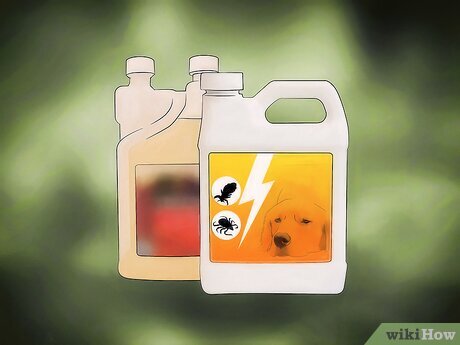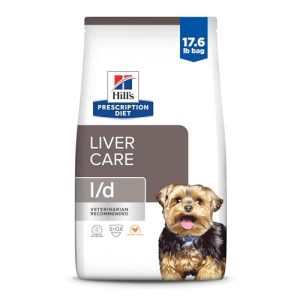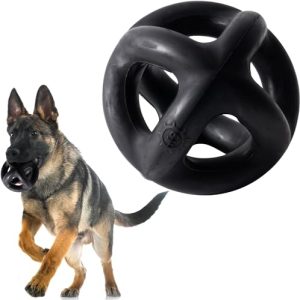If you’ve ever spotted tiny bugs or noticed your dog scratching more than usual, you might be wondering if lice shampoo is the quick fix you need. But before you reach for that bottle, it’s important to know whether lice shampoo is safe and effective for your furry friend.
Using the wrong product could harm your dog or make the problem worse. Keep reading to find out what you should do to protect your pet and get rid of those pests the right way.
Understanding Lice Shampoo
Understanding lice shampoo is key before deciding if it’s safe or effective to use on your dog. These shampoos are specifically designed to target lice on human scalps, but pets have different skin sensitivities and needs. Knowing what’s inside these products and how they work can help you make better choices for your furry friend’s health.
Ingredients And Formulation
Lice shampoos usually contain chemicals like permethrin or pyrethrin, which kill lice by targeting their nervous systems. These ingredients are powerful and formulated for human skin, which is quite different from a dog’s skin in terms of thickness, pH level, and sensitivity.
Dogs can react badly to some of these chemicals, experiencing itching, redness, or even more severe allergic reactions. Some lice shampoos also include fragrances and preservatives that may irritate your dog’s skin. Always check the ingredient list carefully and consider your dog’s history of skin issues before applying anything not made for pets.
Purpose And Usage
Lice shampoos are designed to eliminate lice and nits from human hair, focusing on easy application and rinsing. The treatments often require repeated use over several days to ensure all lice and eggs are killed.
For dogs, the purpose and usage of lice shampoo can be quite different. Dogs don’t typically get the same lice species as humans, and their treatment involves veterinary-approved products made to be safe and effective for animals.
Have you ever wondered why some shampoos cause your dog to scratch more? It could be due to inappropriate formulations. Using a product meant for humans on your dog might not only fail to solve the problem but could also make it worse. Always prioritize products specifically designed for your dog’s skin and pest issues.

Credit: zoosevimliler.az
Common Dog Skin Issues
Dogs often face various skin issues that can cause discomfort and even lead to more serious health problems. Understanding these common problems can help you spot signs early and provide the right care. Skin issues are not just about itching—they can affect your dog’s overall well-being.
Types Of Parasites In Dogs
Parasites are one of the main causes of skin problems in dogs. These tiny invaders can live on or under your dog’s skin, causing irritation and infection.
- Fleas:Small, wingless insects that bite and suck blood, leading to intense itching and allergic reactions.
- Ticks:Larger parasites that attach firmly to your dog’s skin and can transmit serious diseases.
- Mites:Microscopic creatures responsible for mange, which causes hair loss and severe itching.
- Lice:Tiny insects that live on the skin and hair, causing scratching and discomfort but are less common than fleas or ticks.
If you’ve ever seen your dog scratching relentlessly or shaking its head, parasites might be the cause. Have you checked your dog’s fur closely to spot any of these unwanted guests?
Symptoms Of Infestation
Not all skin problems are obvious at first. You need to watch carefully for subtle signs that could mean your dog is dealing with parasites.
- Excessive scratching or biting at the skin
- Red, irritated patches or scabs on the skin
- Hair loss in small or large areas
- Visible parasites or eggs in the fur
- Restlessness or discomfort, especially at night
One time, I noticed my dog pawing at his ear constantly. A quick look revealed tiny black specks—fleas. Treating it early saved him a lot of pain. Would you be able to spot these signs before the problem worsens?
Safety Concerns With Lice Shampoo
Using lice shampoo on your dog might seem like a quick fix, but safety concerns should be your top priority. Dogs have different skin chemistry and sensitivities compared to humans, so what works for people may not be safe for your furry friend. Understanding the risks involved can help you protect your dog from harm while effectively dealing with pests.
Potential Risks For Dogs
Lice shampoos designed for humans often contain chemicals that can irritate a dog’s skin or cause allergic reactions. Dogs may experience redness, itching, or even more severe symptoms like vomiting and lethargy if exposed to harmful ingredients.
Imagine trying a lice shampoo on your dog without checking the label first—could you risk triggering an emergency vet visit? Your dog’s coat and skin barrier are different, so some ingredients may be too harsh and disrupt their natural oils.
Before applying anything, consider how your dog has reacted to shampoos or topical treatments in the past. If your dog is especially sensitive or has existing skin issues, it’s best to avoid human lice shampoos altogether.
Toxic Ingredients To Avoid
Not all lice shampoos are created equal, and some contain toxic substances that dogs cannot safely process. Key ingredients to watch out for include:
- Permethrin:Highly toxic to dogs and can cause neurological problems.
- Pyrethroids:Common in lice treatments but dangerous for pets.
- Malathion:A potent insecticide that may cause severe side effects.
- Organophosphates:Linked to poisoning in dogs, affecting the nervous system.
Always check your dog’s shampoo ingredients and avoid any product containing these chemicals. Instead, look for pet-specific lice treatments that use safer, vet-approved ingredients.
Have you ever wondered why vets rarely recommend human lice shampoos for dogs? It’s because the risk isn’t worth it when safer alternatives exist. Your dog’s health should never be compromised for convenience.

Credit: www.pawpuff.my
Veterinary Recommendations
Veterinary recommendations play a crucial role when deciding how to treat lice on your dog. Using lice shampoo meant for humans can be risky, as these products often contain ingredients that may harm your pet. Understanding what vets suggest helps you protect your dog’s health and effectively get rid of lice without side effects.
Safe Alternatives For Dogs
Vets usually recommend shampoos specifically designed for dogs. These products have ingredients that kill lice but are gentle on your dog’s skin and coat. Some popular options include:
- Medicated shampoos with pyrethrins or permethrin (formulated for dogs)
- Natural remedies containing neem oil or tea tree oil (used carefully)
- Prescription topical treatments or sprays for severe infestations
Choosing dog-safe lice treatments avoids irritation and allergic reactions. Have you checked the label for ingredients before using any product on your dog?
Consulting A Vet
Always talk to your vet before applying any lice treatment. They can confirm if your dog actually has lice or another skin issue that looks similar. This step prevents unnecessary treatments and ensures proper care.
Your vet may suggest a tailored treatment plan based on your dog’s age, breed, and health status. Sometimes, lice are just part of a bigger skin problem that needs attention.
Have you noticed any unusual scratching or hair loss in your dog? A quick vet visit could save your pet from discomfort and complications.
Proper Application Techniques
Using lice shampoo on your dog requires careful application to ensure effectiveness and safety. Proper technique helps target the lice without causing stress or harm to your furry friend. Let’s break down how you can apply lice shampoo correctly and what to do after treatment.
Step-by-step Guide
- Choose the right product:Make sure the lice shampoo is safe for dogs. Some human lice shampoos contain ingredients that can irritate your pet’s skin.
- Prepare your dog:Brush your dog’s coat to remove tangles and loose fur. This helps the shampoo reach the skin where lice hide.
- Apply the shampoo:Wet your dog’s coat with warm water. Apply the shampoo evenly, focusing on the neck, back, and tail—common areas for lice.
- Massage gently:Rub the shampoo into the fur and skin carefully. Avoid the eyes and ears to prevent irritation.
- Let it sit:Allow the shampoo to work for the time recommended on the label. This is crucial for killing lice and eggs effectively.
- Rinse thoroughly:Use warm water to rinse out all the shampoo. Residue can cause itching or dryness, so be thorough.
Post-treatment Care
After rinsing, dry your dog with a towel and keep them in a warm area. Check for any signs of irritation like redness or swelling and consult your vet if needed.
Regularly clean your dog’s bedding and toys to stop lice from coming back. You might want to repeat the treatment after a week to catch any newly hatched lice.
Have you noticed changes in your dog’s behavior or skin after applying the shampoo? Monitoring their response can help you spot any issues early. Your careful care makes a big difference in getting rid of lice safely.
Monitoring And Follow-up
After using lice shampoo on your dog, careful monitoring and follow-up are essential. This helps ensure your pet’s safety and the effectiveness of the treatment. Paying close attention to your dog’s behavior and skin condition can prevent complications and guide you on the next steps.
Signs Of Adverse Reactions
Watch for signs like excessive scratching, redness, swelling, or hair loss. These could indicate irritation or an allergic reaction to the shampoo. Your dog might also show unusual lethargy or discomfort.
Sometimes, reactions appear within hours, but mild symptoms might develop over a day or two. Keep an eye on your dog’s skin and overall mood for at least 48 hours after treatment. If you notice any unusual changes, note them carefully.
When To Seek Professional Help
If your dog’s skin becomes very red, swollen, or starts to ooze, contact your vet immediately. Difficulty breathing, vomiting, or severe lethargy are urgent signs that require prompt medical attention.
Even if symptoms are mild but persist beyond two days, it’s wise to get professional advice. Vets can recommend safer alternatives or treatments tailored specifically for dogs.
Have you ever treated your dog and noticed unexpected reactions? Monitoring closely can make a big difference in your pet’s health and comfort. Don’t hesitate to reach out for help when unsure—it’s the best way to protect your furry friend.
Preventive Measures
Preventing lice infestations in dogs is easier than dealing with them after they appear. Taking consistent steps to keep your pet and their environment clean can reduce the chances of lice becoming a problem. Let’s look at practical ways you can protect your dog through grooming and controlling their surroundings.
Regular Grooming Tips
Brushing your dog’s coat daily helps spot lice or eggs early before they multiply. Use a fine-toothed comb designed for pets, which can remove lice and nits physically. Pay extra attention to areas like behind the ears and around the neck where lice tend to hide.
Bathing your dog regularly with appropriate shampoos keeps the skin healthy and less inviting to pests. Avoid using human lice shampoos, as they can irritate your dog’s skin. Instead, choose products made specifically for dogs that prevent parasites safely.
Do you check your dog’s fur after outdoor play? It can make a big difference in catching infestations before they spread.
Environmental Control Strategies
Lice don’t just live on your dog; they can survive briefly in your home environment. Wash your dog’s bedding, blankets, and toys in hot water frequently to kill any lice or eggs. Vacuum carpets and furniture thoroughly, especially where your dog spends time.
- Use a pet-safe insecticide spray on areas your dog visits often.
- Keep your yard tidy by removing tall grass and debris where pests can hide.
- Avoid contact between your dog and stray or infested animals, which can spread lice easily.
Have you considered how your home’s cleanliness affects your pet’s health? Small daily habits can prevent big problems.

Credit: www.wikihow.com
Frequently Asked Questions
Can Lice Shampoo Harm My Dog’s Skin?
Yes, lice shampoo formulated for humans can irritate a dog’s sensitive skin. Dogs require specially formulated treatments to avoid allergic reactions and skin damage.
Is Lice Shampoo Effective Against Dog Parasites?
Lice shampoos for humans are not designed for dogs and may not kill dog-specific parasites. Use vet-approved products for effective parasite control.
What Should I Use Instead Of Lice Shampoo On Dogs?
Use a veterinarian-recommended flea and tick shampoo made specifically for dogs. These products are safe and effective for treating dog parasites.
Can I Treat Dog Lice With Human Lice Shampoo?
No, human lice shampoos often contain chemicals harmful to dogs. Always consult a vet for safe and proper dog lice treatment options.
Conclusion
Using lice shampoo on a dog is not recommended. Dogs need special treatments made just for them. Human lice shampoos can harm your pet’s skin or health. Always check with a vet before applying any product on your dog. Safe care helps your dog stay happy and healthy.
Choosing the right shampoo makes all the difference. Protect your furry friend with the right advice and products. Simple steps keep your dog free from pests and safe.

Emily Barker is the founder of ChillDogLife.com, a space dedicated to helping pup parents discover the best dog products, lifestyle tips, and cozy ideas for happier homes.
A lifelong dog lover, Emily combines her passion for pets with a knack for research to share trusted recommendations on everything from toys and furniture to health and everyday care.
Her goal is simple: to make life easier, stylish, and more joyful for dogs and the people who love them.







